#Graz arts and culture
Text
Uncover Secrets: 20 Hidden Pearls In Austria
#Austria travel guide#Bad Gastein#Bad Gastein spa town#Best places to visit in Austria#Bregenz#Bregenz festival#Eisenstadt#Eisenstadt cultural heritage#Graz#Graz arts and culture#Hallstatt#Hallstatt scenic views#Hoher Dachstein#Hoher Dachstein adventure#Innsbruck#Innsbruck highlights#Kitzbühel#Kitzbühel skiing resort#Klagenfurt#Klagenfurt on Lake Wörthersee#Lienz#Linz#Linz technology museum#Mariazell#Mariazell pilgrimage#Neusiedler See#Neusiedler See birdwatching#Salzburg#Salzburg tourist sites#Seefeld
0 notes
Text

Double spiral staircase (Doppelwendeltreppe) from 1499 in the Burg of Graz, Austria. This staircase, unique in the world, forks over and over again, creating stone fans, and it is likely that no two steps will be the same given its uniqueness. Its author is unknown.
577 notes
·
View notes
Text
Exitosa Noche de los Museos en Jujuy
#Cultura #Turismo | Exitosa #NochedelosMuseos en #Jujuy
La 11º edición de la “Noche de los Museos“ se concretó durante la jornada del viernes 25 en diferentes espacios culturales de cada una de las cuatro regiones de Jujuy, en donde museos, salas y centros culturales públicos y privados, presentaron diferentes propuestas de manera gratuita para toda la comunidad.El secretario de cultura de la provincia, Luis Medina Zar, acompañado por las directoras…
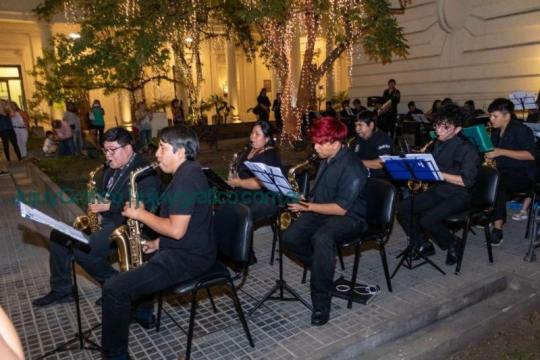
View On WordPress
#caja#Casa de Gobierno#Casa de las Letras#Casa Museo Macedonio Graz#Centro Cultural Culturarte#Centro de Arte Joven Andino#centros culturales#Espacios Culturales#Gisela Arias#Luis Medina Zar#Museo de Ciencias Naturales Carlos Darwin#Museo Posta de Hornillos#Museo Soto Avendaño#museos#Noche de los Museos#Patio de las Magnolias#Red de Museos#Valentina Millón
0 notes
Text
A HOMESTUCK MANIFESTO
I want to think about what comes next after Homestuck.
That’s a challenge to the world as much as a personal mission statement.
I want to see writers and artists and creators making the next Homestuck, taking its themes and binding them into new fabrics, giving life to new creatures even more beautiful and uncanny than the original species.
I hunger to see new forms of story and image evolving with Homestuck in their DNA.
This process is already underway. Homestuck is a massive boulder dropped into the waters of culture, and the full wake of its ripples is still to be felt. But let’s call attention to this process and ask: what would happen if we engaged in it more consciously? If we sifted through our feelings about Homestuck to create something new, deliberately, with great and wonderful purpose?
The tools we need are within our grasp. Homestuck presents itself as magic, but it’s a work constructed in time out of specific storytelling choices. So let’s understand those choices. Let’s understand how Homestuck did what it did, and use Homestuck’s tools to build art that grips the soul of future generations as strongly as Homestuck did ours.
What follows is not a traditional literary analysis. It does not cite its sources; it does not seek to give us a comprehensive understanding of Homestuck. If it does, it does so only to the extent it suits its larger purpose.
Our goal here, our quest, if you will, is not to understand the Homestuck that exists, but the Homestuck that comes next.
Let's begin.
0. THE WILD GARDEN
Let’s lay the absolute groundwork here.
Homestuck is constructed as a re-appropriation of itself. Or to put it another way, it’s a big improvisational move, a process of “yes and”-ing so hard it develops a sprawling continuity.
Tiny details are constantly re-contextualized to become part of something else. A joke might turn tragic. A silly aside might turn into something profound.
But it didn’t have to be that way.
It’s crucial to understand that what we experience as continuities were in fact choices made at specific times. Homestuck is a garden where seeds were scattered in every direction, grown en masse, then weeded down to create patterns and forms.
The shape of the garden is designed to conceal the gardener’s hand. But the gardener’s choices are there, every step of the way.
If we are to follow in its footsteps, what choices should we make?
Let’s talk about themes.
1. THE MEANING CRISIS
Nobody in Homestuck knows what they’re doing.
And neither do we.
All the old idols have broken down. The values we were taught in our childhood fail to measure up to the problems of the world we live in. We grasp after careers and lives we were told would make us happy and wonder why we’re left empty. The selves that we were told were us now fit us about as well as clothing we’ve outgrown. Crises loom, political, economic and environmental, and everywhere it feels like the people who are supposed to guide and lead us aren’t doing enough.
It's widening gyres and slouching beasts all the way from here to Bethlehem, is what I’m saying.
The reason people go absolutely insane for Homestuck is that it depicts this crisis of meaning. It shows the questions we might want to ask, and attempts to provide some kind of answer.
The protagonists of Homestuck struggle with what I’ve called “received narrative.” That is, they’ve inherited stories from their families, from the world, that they try to use to define their lives, and it doesn’t work. But these stories are so familiar that it’s hard to think outside them. They have to develop new stories by which to live. Sometimes they succeed, but other times they can’t escape the gravity of the ones they were given.
With me so far?
Great. Now understand that all this was improvised and discovered largely accidentally over the course of ten years.
Here’s a seed that became quite an impressive tree:
The streets are empty. Wind skims the voids keeping neighbors apart, as if grazing the hollow of a cut reed, or say, a plundered mailbox. A familiar note is produced. It's the one Desolation plays to keep its instrument in tune.
It’s a joke. But it was never just a joke. There’s an idea here of dissatisfaction with the stereotypical idea of American suburban life. Egbert here is looking for something more, dissatisfied for reasons they can’t fully articulate. This is typical fantasy protagonist stuff, but there’s something more here, too.
Eventually it’s redirected towards the idea that there really is an unseen riddler. But let’s put that aside for now.
This page, in its moment, says: your life is not the full picture. There’s something else out there, waiting, that’s going to change everything.
That's a potential set-up for a very powerful payoff. It gives us the sense that Egbert and all their friends are going to have to rethink what they know. That this suburban life is not going to be enough for them, that somehow or other they’re going to encounter something they aren’t prepared for, and they’ll have to find a new way of acting and being. That, try as they might to avoid it, they’re going to change over the course of this journey.
But to understand how they change, we need to talk about SBURB.
2. THE PORTAL FANTASY OF IT ALL
A lot of people like to joke that Homestuck is an isekai. I think it might clarify things to use the term portal fantasy instead.
Portal fantasy is simply the fantasy subgenre of characters, usually kids, going to a magical other world. Maybe they make friends, maybe they learn lessons and stuff. You know the drill. I don’t have to to tell you more because the story structure is already so familiar. That’s what gives it power.
Portal fantasy differs from the related Japanese genre of isekai in that isekai in its current form is much more heavily based on video games such as MMORPGs. In the most pervasive isekai narratives, protagonists are rewarded not so much for achieving personal growth as being able to exploit the game mechanics of a game-like system. That’s pretty different from your typical Narnia scenario.
The influence of portal fantasy is everywhere in Homestuck, especially in the beginning. We have nods to the fantasy films of the 1980s that gave us our contemporary idea of this story structure, such as The Neverending Story (itself, in its original book incarnation, a phenomenal commentary on the genre). Our protagonists are genre savvy; they recognize what’s happening here.
But it doesn’t fit quite right. The odd note is first sounded when Egbert asks Nanasprite if what they’re doing is going to save the world. They’re bit unsettled to learn the answer’s no, that something else is going on here. Next we have the fantasy worlds: the planetary lands each present a veneer of exciting adventure. But their inhabitants, the consorts, aren’t fully-realized people, they’re largely cute animals going through the motions, not really understanding the story they’re telling. The carapacians are a little better, but they’re still trapped in a fatalism that feels uncomfortable.
As things rev up in Act 4, we learn about doomed timelines from alt-timeline Dave and Rose, how your entire existence in this setting may be fodder for something other than you. When we learn the true purpose of SBURB and its froggy details in Act 5, we see that SBURB is more like a biological creature, mainly interested in its own reproductive desires. It was never really about the portal fantasy at all. The kids are just along for the ride.
So when we see that Rose wants to tear through SBURB, find out a way to escape fate, and snatch meaning from the jaws of futility, it makes sense. We’ve been given hints already that this is the conflict at hand: the characters vs the story that’s telling them.
(Note: it’s certainly possible to have a reading that SBURB is not evil so much as empty, that it reflects what you bring into it, that its will for you is your will for you. But that’s also a difficult thing, right? If you lack self-understanding, it’s a struggle to bring about your ideal reality.)
What we haven’t mentioned yet is that this is all mediated through the lens of video games. Which makes perfect sense. Because where do we seek meaning, especially as kids? In imaginary worlds that make more sense to us than real life, that give us achievements to take pride in and clear objectives to pursue.
SBURB evokes mechanics from games like Final Fantasy. We see its players complete objectives, cast magic spells, gain power-ups with colorful costume changes. But unlike the narratives implied by traditional video game progressions, leveling up doesn’t mean you grow as a person or process your trauma. Later, in Act 6, when we meet a player who has made his life about winning the game (Caliborn), it’s horrific to behold.
Homestuck is a portal fantasy, but it’s fundamentally a portal fantasy about games. It’s a portal fantasy that shows us how characters seek meaning in being the best at arbitrary game mechanics, but ultimately fail to find it.
So I guess…it actually is an isekai? Huh. Wild.
(But seriously, Homestuck is actually fairly prescient in predicting the ideas that come out of isekai and LitRPG. It’s engaging consciously and deconstructively with the weird ideas of self-fulfillment these genres are drowning in.)
So what might a Homestuckian work look like? It will almost certainly critique a false narrative we live by. It may comment on portal fantasy, or our personal satisfaction that comes as easily as playing a video game. But it doesn’t have to be limited to these things. It might talk about our popular TV shows and movies. It may take apart what’s flawed in Marvel, the latest triple-A game, or the modern dark fantasy novel.
Among its tools will be discomfort. Showing a disconnect early on between our character’s expectations and their happiness can serve as foundation to build on, so that when the flaws of the genre narrative are revealed, it feels like the truth. We may see characters who accept their narratives passively, or rebels like Rose Lalonde, who chose to rip everything apart in search of something better.
These are only some of the possibilities.
When I tell you the stories we live by mislead us, what is your relationship to that? If you were to tear these received narratives apart, what would you focus on, what would you try to say? The art that comes out of this question will be deeply personal to the soul who makes it.
But here’s another question:
Just who is giving us all these narratives, anyway?
3. THE PARENT FLIP
The world we live in was not made by us. It was shaped by forces that predate us, over which we have no control and are born into the grasp of without the knowledge of how to escape.
For instance, our parents.
The guardians who raise us provide our template for how to interpret life. We spend a large part of our lives immersed in the world they built, believing as they believe, living by the values that they instruct us in, so that we might carry their goals forward to the future.
This is an effort that is certain to fail.
Because the problems of today aren’t the problems of twenty or thirty years ago. At best, their messages can only to help in a limited way with the crises we go through as we live our lives. At worst, they actively hinder us from dealing with them productively.
If we are to escape the broken patterns of our world, then we need break out of the stories an earlier generation gave us.
How are parents discussed in Homestuck?
Initially? As jokes.
If we take our “future knowledge” goggles off for a moment, we can see that the early depictions of the kids’ parents are a goofy parody of standard parental tropes. Mom and Dad are nameless, faceless, exaggerated cartoon stereotypes, and conflict between them and their children is initially expressed through a silly video game fight.
There’s a seed of something real here, though. What we’re parodying is a familiar trope of tension between parents and children in kids’ fiction and YA fiction. But that trope exists for a reason. This conflict is rich with potential for any story about growing up. And Homestuck has smuggled the idea of it in as a silly RPG parody.
So we can extrapolate, for instance, that there’s tension between Egbert and their father in part because Egbert doesn’t know yet who they want to be, and that Rose and Mom’s relationship is awkward and contentious, with alcohol involved. We see that there’s something profoundly uncomfortable going on between Dave and his Bro, and Jade’s life in the shadow of a dead Grandpa suggests a psychology that’s not entirely a healthy one.
Understand that I’m not saying that all this was there from the start. Rather, a choice was made to develop these interesting possibilities out of the jokes, to tell a story about how parents that act like these ones might have affected their children.
A major turning point in this regard is when Egbert learns their father’s seeming clown obsession was the result of a failed attempt to connect with them. It’s quite silly, but it plays around with the idea of a gap in perception between parent and child. It’s also a sign the story’s starting to take more of an interest in character psychology, suggesting that what Egbert processes consciously is not the same as their deeper unconscious feelings. This in turn can become a setup for a portrait of Egbert as someone who represses things they don’t want to think about. From this moment, in the long term, comes June Egbert.
When the psychology machine revs up for all the characters in Act 4 and Act 5, it’s able to do so because this foundation was laid.
We also, as early as Act 3, get hints that the parents have intentions and personalities outside of how the kids perceive them. The original purpose is to hint at a larger conspiracy around SBURB, with Mom building a secret lab, Dad trying to investigate the mystery, and Grandpa jumping in and out of time. But what this suggests is that the psychology of the parents might at some point come into play.
But the most exciting development in the relationship between parents and children is Act 6.
The great role reversal. The parent and child flip.
How do you make your faceless parent figures into characters?
By making them kids.
We’re so used to this concept now t that it’s hard to remember how wild it is that Roxy is a teen version of a main character's mom. But the concept is genius. Meeting these characters on the same level forces our protagonists to understand them as people and reflect on their fallibility.
For us as readers, it adds detail and nuance to the cartoonish portraits we got in the beginning. Conversely, we also see what our protagonists might have been like as parents themselves—and turns it from a story of “parents just don’t understand” to a story of how people, despite their best intentions, can wound each other.
(The Homestuck Epilogues are a difficult text to evaluate, but one of the best things within them is Egbert’s arc in Candy, where we see how Egbert might have done as a parent, how their struggles with finding purpose in the world might lead them to embrace a narrative of parenthood yet struggle to have a good relationship their kid. It’s brilliant, and the culmination of everything we’ve talked about here.)
Thus the Homestuckian work of art will be concerned with themes of parents and children. It will play with the boundary between what children understand about their parents and what they don’t. It will show parents as people—fallible people, who make mistakes with severe costs, whose stories fail their children and themselves. It may build from a simple base of what children understand, or it may weave parent and child perspectives together. It may even show us how children fail when they become parents themselves. It will show us the cycles we are trapped in, how we wound and are wounded by our context.
And it will force us to look for a way out.
4. CLASSPECTS AS SIGNPOSTS
Hey. You want to know a secret?
Come closer, and I’ll whisper it to you.
Classpects aren’t actually all that complicated. Ultimately, they boil down to one thing:
Symbols we can use to construct a self.
If Homestuck is about a crisis of meaning, then classpects are part of its answer.
What do we do, when the world gives us no story we can live by?
We make one. We make one out of whatever symbols and messages we can find and put together from the stories we’ve read, from the people who teach and inspire us. Such collages are powerful things. They give us a way out of the dark, they give us a sense of something we are and can be, where there was nothing before.
They give us, in short, a personal mythology.
Classes and Aspects have often been read as codes to be unpacked and solved. It might be more productive to see them as creative tools, signposts designed not to narrow down meaning, but to allow us to explore it.
For instance, the portrayal of Light in Homestuck is unique. As a symbol, it combines notions of brightness, knowledge, future, luck, wealth, and narrative focus. These things aren’t inherently linked out in the world, but they are here, and that’s a choice, and an interesting one. It encourages us to imagine connections between these concepts, and to see if they have any relevance to ourselves. Identifying with the concept of Light, in other words choosing to value clarity, luck, and importance, might be a powerful tool for finding one’s way in the world.
Classes play with signposts at an even more basic level. Sure, we can talk about what a Knight does in the context of the story.
But a knight is already a powerful symbol. We bring so much cultural context to it. The word conjures up images and narratives of devotion, duty, violence, the slaying of dragons, armoring oneself against the world, and the rescuing of princesses. If we put that together with a concept like Time, we get a distinct character. If we put that together with our own experience of the world, we can create powerful concepts for who we want to be.
Interestingly, this complicates what we said about SBURB. As much as our protagonists struggle to find meaning within it, there’s still something there that they can latch onto. Classes, aspects, denizens, even consorts and lands—these things don’t have to be devoid of meaning. We can choose to affirm them; we can build something out of them, and say, yes, this is me, this is myself.
But it’s a double-edged sword.
We are responsible for the narratives we choose to live by. And we may find ourselves falling into a narrative that hinders us more than helps us, that creates a self-destructive self.
What does it mean to believe deeply that you are a thief, that taking from others to benefit yourself is the best way or comes to you the most naturally? What does it mean to tell yourself over and over that you’re a prince, with all the attendant baggage of power and grim responsibility that comes with that concept? Or, to follow the path further, what does it mean to tell yourself over and over that you are a destroyer or must be destroyed?
If we are to escape the story we’re trapped in, we must take care, lest we trap ourselves in a story of our own making.
Homestuck never quite resolves the ambiguity around these symbols of self, around whether SBURB hurts or helps, whether classpects are things you create or things that create you. But this ambiguity is a productive one. It gives us symbolic tools we can use in the creation of meaning, and it shows us the side of them that should make us wary.
The work that is to come after Homestuck will be about symbols. It may show us how we seek them in popular culture, or the people around us. It may use some of the clusters of meaning that that we see in Homestuck, but it will not be limited to them. It will write its own language of symbols, joining Light and Time to notions like Memory, Need, Rupture, and War, and be filled not just with knights and princes but brigadiers, lancers, healers, druids, taxidermists, sentries and waifs. It will build with tarot cards, enneagram types, and Babylonian gods. It will place all the signposts we’ve created in millennia of existence into new contexts and meanings.
By such means will it show us a way forward.
There’s one kind of symbol we haven’t talked about yet, however.
The kind that holds a mirror up to the world.
5. THE POWER OF ALTERNIA
There’s a reason dystopias have been so popular in young adult fiction. Sure, they’re cliché now, but they speak to something raw and visceral.
When you’re growing up into a world that doesn’t make sense, it’s natural to find refuge in emotional extremes. Stories of blood and violence, fates worse than death, and governments that demand horrific things of their citizens speak to the anxieties of the adolescent mind. They validate the feeling that something is wrong—that the world we’ve inherited is broken and unfair and has no place for us. And they’re right.
Alternia taps into these dystopian feelings perfectly. What makes it so fun is that it’s an inversion of a teenage fantasy. It’s a world where there are no parents, where kids can have access to power and violence, where you can sit around and play video games and design your own house. It almost feels like a response to the “parents don’t understand” themes of the early acts.
But the dystopia’s there, and it’s sneaky. A land of lost boys and girls isn’t actually all that great to live in. It’s lawless, survival of the fittest, with children killing each other left and right. And the future adult roles most of the troll kids aspire to are a glamorous veneer over competition for slots in a fascist military hierarchy. Which is to say nothing of the blood caste system as a way in which the kids are taught by their world to abuse and exploit each other. Crushes, personal slights, competition for status, group dynamics, attempts to define identity – all these familiar teenage dynamics play out on a backdrop of maiming and murder.
Which is perfect. Because when you’re young, all those social interactions genuinely do feel like life or death, and adulthood a regime of exploitation and horror bearing down on you. Alternia is a heightened, exaggerated version of reality. It expresses an emotional truth, not a literal one, validating our most intense feelings and giving us a road map to understanding them.
No wonder so many people wanted to skip to Act 5 and get to the trolls.
(See also Hiveswap Friendsim and Pesterquest, which explore these themes really really well.)
And Alternia, for a world where parents aren’t really a thing, tells us a surprising amount about the parental generation. In mid Act 5-2, Ancestors are added to Alternia’s wordbuilding, and we learn that as much as the trolls skipped having traditional parental figures, they were never devoid of role models. The deeds and exploits of notable figures throughout ancient Alternia gave them models to think about each other and themselves—even when those models were toxic ones. In a way, this isn’t so far from the human kids at all.
Furthermore, as time goes on, we acquire an origin for Alternia’s fascist worldview. Doc Scratch, manipulator of society, stands in for all those aspects of the world that work to create the false narratives we are born into, a true evil father figure – or uncle, if you prefer. And he's an extension of the ultimate evil father figure, Lord English, who controls not just Alternia but the timelines of the human children as well, whose belligerence and apathy give us aeons of toxic narratives and abuse. We see that story played out in Alternia in every interaction, in every moment, the beliefs its architects live by.
This is the power of dystopia—it can hold a broken mirror up to the world we live in.
Therefore the Homestuck that will come after Homestuck will worldbuild gardens of horror. It will not pull its punches but show us insidious societal systems and the effect they have on the people who live under them. It may depict fascism, authoritarianism, feudalistic tyranny, or all three. It will be unafraid to evoke blood and guts but use them to paint a picture of what we want, what we fear, and how we break under our false horizons.
As it depicts the path out, so, too, will it have its reverse side—it will show us all the hells and purgatories we’re trapped in.
6. SAILS TO THE WIND
Much has been written (including by this very author) about Homestuck’s metafictional aspects – the way it comes to foreground a more direct clash between character and narrative.
But the point I want to make here is that the metafictional angle wouldn’t work without these earlier choices. They allow the comic to talk about these concerns long before any notion of canon rears its head.
There are many ways of approaching these themes, and we don’t have to be limited to notions of Ultimate Selves and Beyond Canon to explore them. Such things are valuable, but they are only one retelling of the myth. If we are to make the next Homestuck, we must make our own.
I want to illustrate the space of possibility by offering some examples of works that explore similar themes. Note that I’m not saying these works were influenced by Homestuck in any way, but rather that they use some of the same tools to speak to the same questions, anxieties and concerns.
In trying to make what comes after Homestuck, we might consider:
Revolutionary Girl Utena, which foregrounds the archetype of the Prince as duelist, tyrant, and hero and dares its characters to break free from the false reality that shapes even these aspirations and dreams.
The Familiar by Mark Z. Danielewski, author of Houseof Leaves, whose core narrative concerns an twelve-year-old girl in thrall to an entity whose intentions are unclear but may be shaping the fabric of reality itself; which depicts the inner lives and uncertainties of her parents with just as much detail as they struggle, and sometimes fail, to make the right choices to help her; a story which, even in its incomplete form, explores a notion of a greater S.E.L.F that is not just you but also those who share something with you, where characters from other realities blur into transcendent archetypes in this one.
Digimon, perhaps the quintessential work of portal fantasy, not only Digimon Tamers, which steers the genre into a place of trauma, cosmic horror, and adults horrified by children saving the world, but also Digimon Adventure, which creates strong character arcs for eight very different children as they try to navigate a strange alien world, and shows us their struggle to reconcile with their parents as part of the process of understanding themselves.
The Neverending Story by Michael Ende,foundational text for Homestuck, which tells us not only about the rich possibilities inherent in reading oneself into fantasy worlds, but also the terrible potential for harm in making oneself an emperor over them.
Pale, by Wildbow, author of Worm, an urban fantasy story about three teenagers thrust into a world of magic and murder, a world where symbols literally create reality, where concepts like Carmine and Aurum have a powerful pull, where the Self is something that can be nourished or taken apart and put back together, a story where the parents are not just supporting cast but fully realized people forced to reckon with the ways in which they have deeply failed their children, and which contains perhaps the most thorough investigation of the question of “is it good for children to go on magical adventures?” ever committed to the page.
Heaven Will Be Mine, by Aevee Bee,in which the giant robots we pilot through space become the symbolic manifestation of our inner selves and our way of bringing about our ideal reality, and, relatedly, We Know the Devil, in which the repression of those selves causes them to burst out from us in terrifying and glorious new forms.
Crow Cillers, by Cate Wurtz, an often trauma-filled horror comic in which a group of kids and, eventually, adults, tries to fight back against an ever-present death cult that has its grips on every corner, all the while encountering Psyforms, beings made of pure mind, while characters from television and cartoons dance in the margins and all the while the line blurs between audience and art until it becomes difficult to tell who created who—a story that asks what it means to find meaning in stories when the corporate entities that own them are trying to devour us.
It's a tragically short list, I know. But perhaps it conveys some of the angles we might take.
We can also look at works that are known to have inspired by Homestuck. There aren’t many yet, but there are a few.
Undertale is famous for its Homestuck influences, with parallel timelines, an idea of agency that persists across them, and a contentious relationship between player and character, but for my part, I’m just as interested if not more so in Deltarune, which seems to be slowly building a grand thesis about portal fantasy, where the kids' adventures in the Dark Worlds seems to be offering them an escape and helping them become their best selves—but hints at a coming challenge to that simple worldview in the question of who’s really experiencing that escape.
The Locked Tomb, by Tamsin Muir – This is the big one, that really shows what building on Homestuckian themes can achieve. It turns out there really is an audience for weird aggro formalism in scifi publishing if you make it sufficiently gay. But smartly, like Homestuck, the Locked Tomb builds its weird mysteries gradually, adding on layer after layer on the solid foundation of characters we can follow and get invested in. There’s so much to notice – there’s the highly categorized teenagers involved in a murder feud, there’s the constant whiplash of humor and tragedy, there’s the endlessly open spaces in the story to interpret and project on to.
But to me, what stands out the most is the portrait of God and his court as every bit as emotionally chaotic as the sniping teenagers. You go to heaven, and God’s making out in the corner with his friend group, and you look for the adult in the room but the adults in the room don’t know what they’re doing and they never really did. It’s a portrait of the parents, it’s a portrait of the Ancestors, it’s a portrait of the gods of the new world, and it’s exquisite.
The Locked Tomb gives us a world at war with its own mythological narrative, rich with angst and irony. It’s a worthy successor to everything Homestuck was doing. It shows us how much these themes can say to us, and it gives us a hint at how powerful Homestuck's legacy might be.
7. THE APOTHEOSIS OF HOMESTUCK
There’s a lot of discussion about how to continue Homestuck. How to do it justice. What post-canon might look like, and what it might not. What fan comics, what fan fics, what semi-official works truly live up to the spirit of its characters and its multiverse.
To be clear, those discussions are awesome. I’m so glad those things exist, and it’s wonderful to see them unfolding.
But I don’t want the process to stop there. I'd be disappointed if it was only about adding to and re-articulating Homestuck itself.
I want this—
—This multifaceted, complicated, emotionally laden thing that is the experience of engaging with and creating with and interpreting Homestuck—
To go out into the world and to be infused into the world, to become waves spreading further and further. I want to experience the Homestuck artistic movement, the Homestuck school of thought. I want it to be an influence on the fiction of the coming generation of authors, and the next, and the next.
I want Homestuck to be one of those albums that's too obscure to be known by the general public, but everyone who listened to it went on to start an enormously successful band.
Homestuck can appear like a thing that was conjured out of the ether, but it isn’t. It’s a product of a particular time.
But that in itself is profound. When you create art, you reach back to all the things that have shaped you, and you listen to what the world around you needs, and you try to say what needs to be said. Which means you're a part of a history and culture that needs to say those things, which will be different from the things that needed to be told yesterday, and different from the stories that will be needed tomorrow.
There’s no otherworldliness to it, no platonic other reality. But for all I've talked about art being made of choices, there's still something transcendent here.
To make Homestuck—and to make art inspired by Homestuck—means being a node in a web formed of millions of people, where a light passes down the chain to you, and for the briefest of moments, you get to be filled with its presence, before it moves on to the next person in the chain.
That light isn't yours. Not really.
But at the same time, you do get to choose how that light manifests.
And to engage with that process consciously—to think deliberately about what we want to create—that gives us power and agency over that process, our sense of the world, and ourselves.
So let’s do this. Let’s make the thing that Homestuck is telling us can exist, the thing it’s paving the way for, the thing we know in our soul can come to be.
Let’s make the next Homestuck happen.
—Ari
POSTSCRIPT
“To put out a manifesto you must want: ABC
to fulminate against 1, 2, 3
to fly into a rage and sharpen your wings to conquer and disseminate little abcs and big abcs, to sign, shout, swear, to organize prose into a form of absolute and irrefutable evidence, to prove your non plus ultra and maintain that novelty resembles life… I write a manifesto and I want nothing, yet I say certain things, and in principle I am against manifestoes, as I am also against principles… I write this manifesto to show that people can perform contrary actions together while taking one fresh gulp of air…”
— Tristan Tzara, “Dada Manifesto 1918”
"The cyborg is resolutely committed to partiality, irony, intimacy, and perversity. It is oppositional, utopian, and completely without innocence....the cyborg would not recognize the Garden of Eden; it is not made of mud and cannot dream of re-turning to dust...This is a dream not of a common language, but of a powerful infidel heteroglossia. It means both building and destroying machines, identities, categories, relationships, space stories...I would rather be a cyborg than a goddess."
— Donna Haraway, "A Cyborg Manifesto"
“What we need is works that are strong straight precise and forever beyond understanding... let each man proclaim: there is a great negative work of destruction to be accomplished. We must sweep and clean…to divest one's church of every useless cumbersome accessory; to spit out disagreeable or amorous ideas like a luminous waterfall, or coddle them—with the extreme satisfaction that it doesn't matter in the least…freedom: Dada Dada Dada, a roaring of tense colors, and interlacing of opposites and of all contradictions, grotesques, inconsistencies: LIFE.”
— Tristan Tzara, “Dada Manifesto 1918”
“These are really the thoughts of all men in all ages and lands, they are not original with me,
If they are not yours as much as mine they are nothing, or next to nothing,
If they are not the riddle and the untying of the riddle they are nothing,
If they are not just as close as they are distant they are nothing.”
—Walt Whitman, Song of Myself
𖤓
#homestuck#homestuck analysis#what comes next after homestuck#the future of homestuck#homestuckian art#you are actually 100% sure walt whitman said that
315 notes
·
View notes
Text
The Evens Arts Prize 2019

The Evens Arts Prize 2019 was awarded to choreographer and artist Eszter Salamon. Composer Éliane Radigue received the Special Mention of the Jury.
The laureates were selected by an independent jury, who chose from a list of 45 internationally acclaimed artists, nominated by representatives of major European cultural institutions.
The Jury of the 2021 edition was composed of Cristina Grande, Head of the Performing Arts Department, Serralves Foundation, Porto; Andrea Lissoni, Senior Curator of International Art (Film), Tate Modern, London; Malgorzata Ludwisiak, Director, Ujazdowski Castle, Center for Contemporary Art, Warsaw; Frank Madlener, Director, IRCAM, Paris | Christophe Slagmuylder, Artistic Director, Wiener Festwochen, Vienna. The Jury Chair was Ernest Van Buynder, former Chairman, M KHA, Antwerp.
Curated by Anne Davidian for Evens Foundation.
The Laureate
The Jury has acknowledged Eszter Salamon’s ambitious and uncompromising work that explores contemporary issues touching upon what has been forgotten, excluded, and repressed in Western consciousness. The Jury has particularly valued the strong European resonance of her work and the way it articulates individual and collective experiences. Building on history to imagine a possible future, Salamon’s œuvre embodies an immaterial inheritance of gestures, movements, and dances to reaffirm art’s insight into the contemporary world.
Born in Budapest, Eszter Salamon lives and works between Berlin, Paris, and Brussels. Her work has been presented at Centre Pompidou, Avignon Festival, PACT Zollverein Essen, Ruhrtriennale, Holland Festival, The Kitchen New York, HAU Hebbel am Ufer Berlin, Berlin Documentary Forum, Kunstenfestivaldesarts Brussels, and Manchester International Festival, as well as in museums including MoMA, Witte de With, Serralves Foundation, Jeu de Paume, Akademie der Künste Berlin, and mumok Vienna.
The award ceremony and a discussion with Eszter Salamon took place on April 12, 2019, at the Akademie der Künste, Berlin, during the opening evening of the conference A Soul for Europe.
The Special Mention of the Jury
The Jury recognised and awarded with a special mention the unique path of French composer Éliane Radigue. One of the most innovative and important contemporary composers, she has been a major influence for generations of composers, musicians and artists alike. Exploring minimal rhythms and changes in different harmonies that unfold into intricate sonic webs, Radigue’s work has been deeply shaped by a constant interest and curiosity towards the world appealing for unique forms of introspection, empathy and attunement with the world.
Pioneer of electronic music, Éliane Radigue began a renewal of her creative process in 2002. Enriching her compositions with new timbres and resonances, she has been collaborating with acoustic instrument performers, for whom she composes without scores, according to the principle of oral and aural transmission.
A special event dedicated to Éliane Radigue was organised at Centre Pompidou in Paris on September 13, 2020, by IRCAM and Musée national d'art moderne, in partnership with the Evens Foundation. Read more
The Nominators of the Evens Arts Prize 2019
Bart de Baere, Director, M KHA, Antwerp | Roman Belor, Director, Prague Spring Festival | Daniel Blanga Gubbay, Artistic Co-Director, Kunstenfestivaldesarts, Brussels | Manuel Borja-Villel, Director, Museo Reina Sofia, Madrid | Silvia Bottiroli, Artistic Director, DAS Theatre, Amsterdam | Yvonne Büdenhölzer, Artistic Director, Theatertreffen Festival, Berlin | Dorota Buchwald, Director, Institut Theatralny, Warsaw | Adam Budak, Chief Curator, National Gallery, Prague | Marie Collin, Artistic Director, Festival d’Automne, Paris | Ingrid De Ketelaere, Head of Performing Arts and Paul Dujardin, Director, BOZAR, Brussels | Ekaterina Degot, Director and Chief Curator, Steirischer Herbst, Graz | Elvira Dyangani Ose, Director, Showroom, London | Silvia Fanti, Artistic Director, Live Arts Week /Xing, Bologna | Hicham Khalidi, Director, Van Eyck Institute, Maastricht | Maria Lind, Director, Tensta Konsthall, Stockholm | Emma Lavigne, Director, Centre Pompidou, Metz | Anne Hilde Neset, Director, Kunsternes Hus, Oslo | Mark Peranson, Head of Programming, Locarno Film Festival | Nataša Petresin-Bachelez, Curator, Contour Biennale 9, Mechelen | Jan Raes, Director, Concertgebouw, Amsterdam | Tiago Rodrigues, Artistic Director, Teatro National Dona Maria II, Lisbon | Eva Sangiorgi, Artistic Director, Viennale, Vienna | Alistair Spalding, Artistic Director and Chief Executive, Sadler’s Wells, London | Christa Spatt, Head of Programming, Tanzquartier, Vienna | Virve Sutinen, Artistic Director, Tanz im August Festival, Berlin | Vangelis Theodoropoulos, Artistic Director, Athens & Epidaurus Festival | Igor Toronyi-Lalic, Artistic Director, London Contemporary Music Festival.
The selection of the panel of experts has been made with the advice of Filipa Ramos, editor in chief of art-agenda.
📷 Eszter Salamon ©Bea Borgers | Eliane Radigue ©Delphine Migueres
0 notes
Text
MAJD ABDEL HAMID

Jeudi 4 mai 2023 à 19h (heure de Paris)
Thursday May 4th 2023, 7pm (Paris time)
Majd Abdel Hamid est un artiste palestinien. Il est né à Damas en 1988 et vit actuellement entre Beyrouth et Paris. Il est diplômé de l'Académie d'art de Malmö (2010) et de l'Académie internationale d'art en Palestine (2007-2009).
Il a produit des installations et des vidéos et, depuis une dizaine d’années, il a surtout réinvesti des artisanats dits traditionnels, comme la broderie et le point de croix, afin de figurer les conflits ultra-contemporains avec lesquels il vit. Il travaille les tensions entre le temps de l’actualité et le temps de la fabrication matérielle de ses pièces, qu’il appelle des « sculptures de longue durée », auxquelles il consacre des centaines d’heures. Majd Abdel Hamid dit vouloir fabriquer de la beauté malgré ou contre l’horreur politique.
Des expositions monographiques lui ont été consacrées : Muscle Memory au Centre d'Art Contemporain de Glasgow (2022) ; 800 meters and a corridor, gb agency, Paris (2022) ; A Stitch in Time, Fondation d'Entreprise Hermès, Bruxelles (2021).
Son travail a été présenté dans de nombreuses expositions collectives, dont Memory Sews Together Events That Hadn't Previously Met, Sharjah Art Museum, Sharjah ; Splendid Isolation, SMAK, Ghent ; La Beauté du Diable, Frac Franche-Comté, Besançon (2022) ; Répare, Reprise, Cité Internationale des Arts, Paris, (2021) ; Heartbreak, Ruya Maps, Venise et Touché !, Beirut Art Center, Beyrouth, (2019) ; à Krognoshuset Lund en Suède (2016), à IVAM (Valence) et au Centre culturel Halil Saakini en Palestine (2018).
Il a participé à plusieurs résidences et ateliers internationaux, notamment March Project (Sharjah Art Foundation, 2015), Former West (Berlin 2013) et Truth is Concrete (Graz, 2012).
Majd Abdel Hamid est actuellement en résidence à la Cité Internationale des
Arts (où il a déjà été résident, en 2009).
[EN] Majd Abdel Hamid is a Palestinian artist, born in 1988 in Damascus; he currently lives between Beirut and Paris. He studied at the Palestine Academy of Art from 2007 to 2009 and graduated from the Malmö Academy of Art in 2010.
He creates installations and videos and he has reinvested since a decade so- called traditional crafts such as embroidery, in order to represent the ultra- contemporary conflicts with which he lives and works on the tensions between the time of current events and the time of the material fabrication of his pieces, « long duration sculptures », as he says, devoting hundreds of hours to each of his embroideries, Majd Abdel Hamid says he wants to make beauty despite of— and against political horror.
Majd Abdel Hamid solo exhibitions include ‘Muscle Memory’, CCA: Centre for Contemporary Arts, Glasgow; ‘800 meters and a corridor’, gb agency, Paris (2022); ‘A Stitch in Time’, Fondation d’Entreprise Hermès, Brussels (2021) Majd Abdel Hamid’s work has been featured in numerous group exhibitions, including ‘Memory Sews Together Events That Hadn’t Previously Met’, Sharjah Art Museum, Sharjah; ‘Splendid Isolation’, SMAK, Ghent; ‘La Beauté du Diable’, Frac Franche-Comté, Besançon (2022); ‘Répare, Reprise’, Cité Internationale des Arts, Paris, (2021); ‘Heartbreak, Ruya Maps’ ,Venice; ‘Touché! (gesture, movement, action)’ ,Beirut Art Center, Beyrouth(2019) ; at Krognoshuset Lund in Sweden (2016),at IVAM Valencia and the Halil Saakini Cultural Center in Palestine (2018).
He has taken part in several international residencies and workshops, including March Project (Sharjah Art Foundation, 2015), Former West (Berlin, Germany, 2013) and Truth is Concrete (Granz, Austria, 2012). Hamid is currently in in residence at the Cité Internationale des Arts in Paris, where he was a resident in 2009.
Programmation et prochains rendez-vous sur ce site ou par abonnement à la newsletter : [email protected]
Pour regarder les séminaires antérieurs : http://www.vimeo.com/sysk/
Séminaire conçu et organisé par Patricia Falguières, Elisabeth Lebovici et Natasa Petresin-Bachelez et soutenu par la Fundación Almine y Bernard Ruiz-Picasso para el Arte
1 note
·
View note
Text
‘Conversation Pieces’ @ Supergau
This article was first published in the online SuperMag - magazine from the Supergau Festival.
The chance to publish a report in the Supergau Magazine is a nice opportunity to invite you to get involved in the upcoming Supergau Festival. I am a Dutch artist living near Rotterdam. The beauty of art is that it has many forms and possibilities. I am especially interested in the social insights that art can offer when we work together. In order to create meaning, I try to get to know the Lungau region and the people who live there.
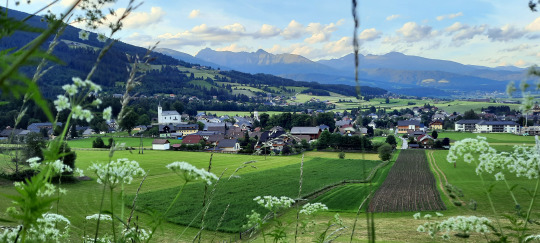
Therefore I felt excited that I was invited in June by Tina Heine from Supergau to come to this beautiful environment. We stayed at Hotel Post with a large group of artists. After a two-day car trip with my wife Hristina we were welcomed by the Mayr family in Mauterndorf.
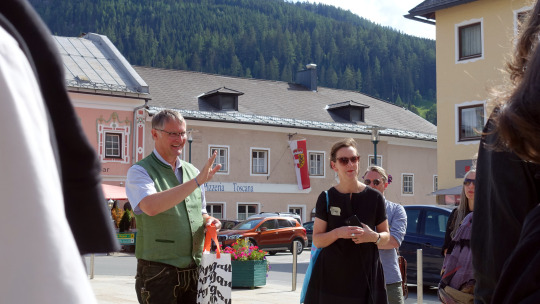
It was an impressive weekend with many special encounters and conversations. We were warmly welcomed by Tina Heine and Matthias Ais & Martina Berger Klingler from Salzburger Land. Afterwards we were shown around by Mayor Georg Gappmayer of Tamsweg and enjoyed a wonderful diner in the Kuenburg Castle. It promised to be an inspiring weekend.


During my first online research I had read about 'Landflucht'. That's what it's called when young people exchange the countryside for the big city. This theme intrigues me because it says something about the preferences we have. Where do we want to live and under what circumstances? During my stay in the area I spoke about this theme with a variety of people.
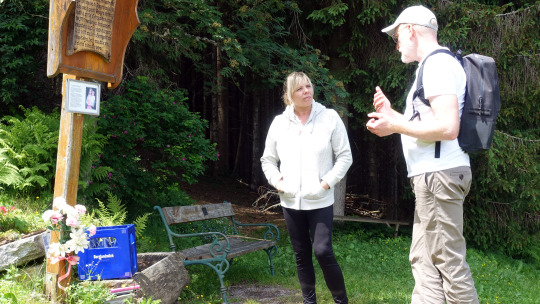

I saw that local traditions and rituals have an important place in daily life. At the same time, I noticed that these old traditions are announced today as events in the tourist agenda. It got me thinking. In the Netherlands there is little left of the old traditions outside the famous touristic sites and villages.
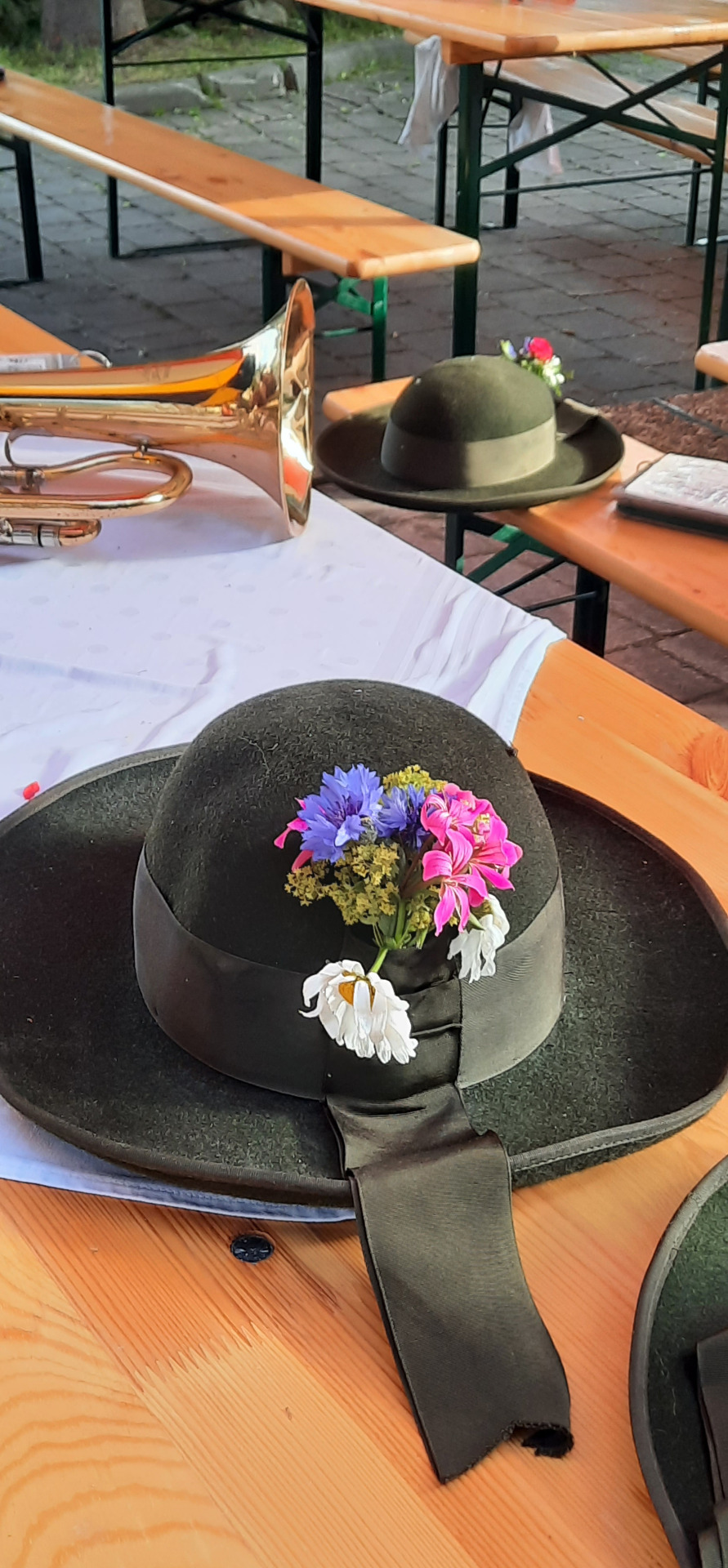
It strikes me that 'Landflucht' is often seen as something negative. Empty shops can be witnessed here and there. Due to globalization there is a worldwide tendency in which people, knowledge and resources are mainly concentrated in and around the large cities. But new technologies offer also the opportunity to attract people from abroad and to revitalize shrinking communities.
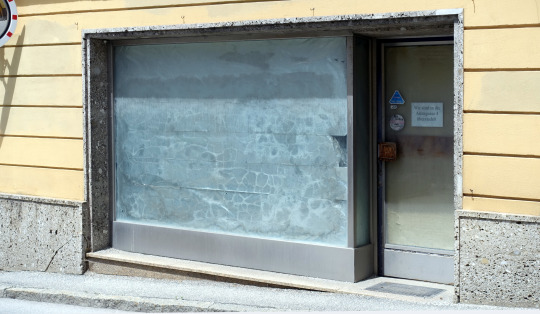
The youngsters I speak to or read about go to study in Saltzburg, Graz, Wien or Linz, for example. One of them pointed out the long traveling time from Vienna to get back 'home'. The qualities of the countryside are slowly fading into the background it seems. I wonder whether climate change and the corona crisis might shed a different light on this?

Among the people I spoke to were also youngsters who came to this region to work from outside Austria. The question that arises from these conversations is how accessible the local community is to newcomers? I read on the internet that you can even feel an outsider if your parents come from Graz. So how do you maintain the rich local traditions when your own population is shrinking?
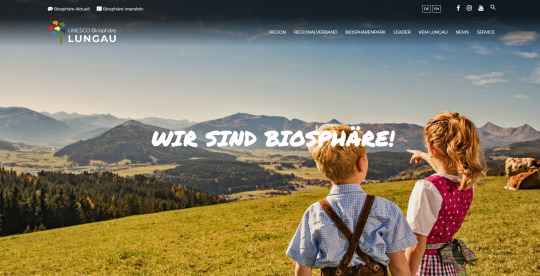
We attended a presentation from Georg Macheiner about Lungau as the largest biosphere park in Austria. On the website of this model region for sustainable development, I see the future vision presented of a boy and a girl on an alpine meadow, dressed in traditional clothing. Heike Posch of the Supergau organization explained to me that this clothing is passed on from generation to generation and is therefore very sustainable. I wonder how do I relate to this image if I would like to come and live in the Lungau region?

The Lungau region has a rich cultural past and that past is visible wherever you look, but what about the picture of the future? This billboard near Tamsweg with 'We protect Austria' makes clear that the future must be above all a safe future. But how do you bind young people to this region and invite them from abroad to contribute and built a future in Lungau?

In the line of this question I am collecting ideas for the development of this area. I'm curious what do you think? For example, someone told me, “why don't we create flexible workspaces in the empty shops of Mauterndorf?” By placing construction boards at various locations during the festival in 2023, I want to expose these ideas in their environment and offer 'windows of opportunity'. What possible developments in your town or village make the Lungau region attractive for youngsters?
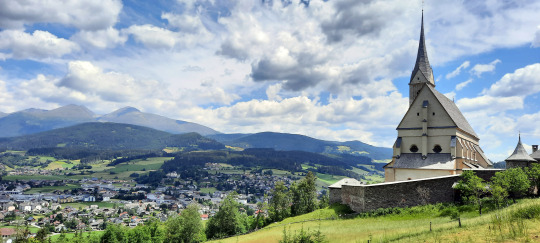
Let me know if you want to contribute with your ideas to ‘Conversation pieces’ or if you want to help realizing this art project: info[at]edwinstolk.nl I will return to Lungau in September and would love to meet with you in person. The beautiful photographs in this article were made by my wife Hristina Tasheva.
All the best,
Edwin Stolk
0 notes
Text
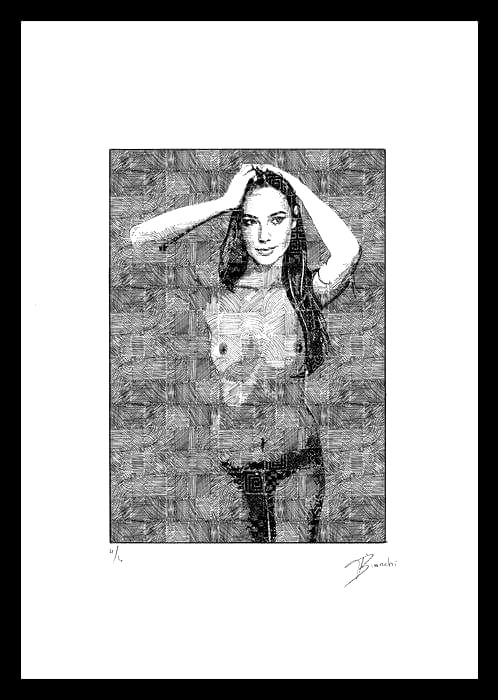
Gal Gadot
Art: Anna Bianchi
Anna Bianchi est née en Italie. Elle vit et travaille à Graz en Autriche depuis dix ans. Elle fait partie du groupe d'artistes gravitant autour d'Emma Wildfang.
Le groupe travaille au Studio Wildfang depuis environ une décennie. Après des études d'art, Anna a suivi sa propre voie artistique.
Comme s'il avait toujours été là, comme un élément de base éternel, le motif en damier se retrouve dans presque toutes les cultures et parties du monde depuis la préhistoire. Très tôt, dans les peintures rupestres du Paléolithique supérieur à Lascaux, par exemple. Cependant, il n'est pas seulement présent dans les plus anciennes reliques picturales connues, mais réapparaît aussi, encore et encore, réinventé chaque jour et interprété sous les formes les plus variées. La base graphique, simple - le croisement de deux lignes à angle droit - crée un univers infini de possibilités et de variétés. Les œuvres de Bianchi rappellent de fines gravures sur cuivre.
#Gal Gadot #Original Art #Anna Bianchi
#Emma Wildfang #Wien #Dessin
0 notes
Photo

Museum, Graz
#museum#graz#art#kunst#painting#sculptures#angels#sculpting#building#beautiful#aesthetic#artsy#photography#architecture#pastel#city of art#art museum#graz austria#austria#culture#learnedfromthepizzaman#galery#art galery#amazing#impressive#sky#blue#clouds
48 notes
·
View notes
Text
landtag
1 note
·
View note
Photo
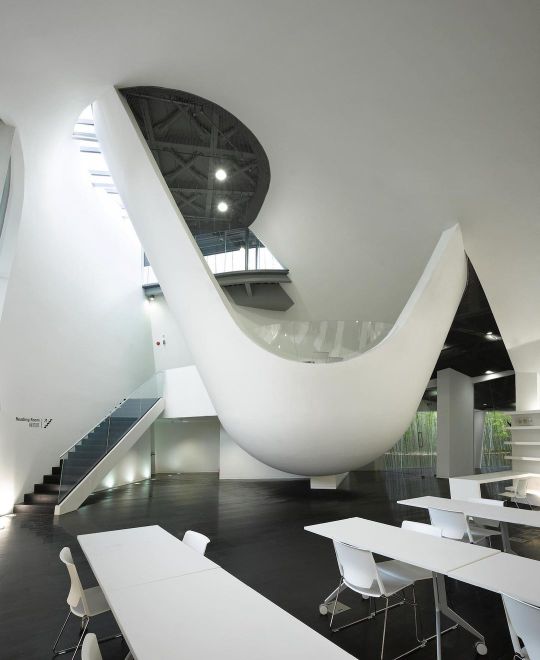
#ArchitectureBooks Architecture Unbound: A Century of the Disruptive Avant-Garde By Joseph Giovannini. Read more: Link in bio! In Architecture Unbound, noted architecture critic Joseph Giovannini takes us to architecture’s wilder shores as he traces a century of the avant-garde to transgressive and progressive art movements that roiled Europe before and after World War I, and to the social unrest and cultural disruption of the 1960s. Manifestos produced during this pivotal and fertile period opened the way to tentative forays into an inventive, anti-authoritarian architecture in the next decade. Built projects broke onto the front pages and into public awareness in the 1980s, and took digital form in the 1990s, with large-scale international projects landing on the far side of the millennium. 1- Thom Mayne/Morphosis Architects, Giant Interactive Group Headquaters, Shanghai, China, 2010. Photograph © Roland Halbe 2- Architecture Unbound: A Century of the Disruptive Avant-Garde By Joseph Giovannini © Rizzoli New York, 2021 3- Eric Owen Moss, Lawson-Westen House, Los Angeles, California, 1993. Photograph © Tom Bonner 2017 4- Manfred Wolff-Plottegg, Bathroom "for K. Schwitters," Graz, Austria, 1983. Photograph © Manfred Wolff-Plottegg 5- Bernard Tschumi Architects, Parc de la Villette, Paris, France, 1982-98. Photograph J.M. Monthiers, courtesy Bernard Tschumi Architects 6- Preston Scott Cohen, Lightfall, Herta and Paul Amir Building, Museum of Modern Art, Tel Aviv, Israel, 2010. Photograph by Preston Scott Cohen, Inc. 7- Ateliers Jean Nouvel. 53 W 53, 2007- 2019. Photograph by Joseph Giovannini #book #architecturebook #архитектура www.amazingarchitecture.com ✔ A collection of the best contemporary architecture to inspire you. #design #architecture #amazingarchitecture #architect #arquitectura #luxury #realestate #life #cute #architettura #interiordesign #photooftheday #love #travel #construction #furniture #instagood #fashion #beautiful #archilovers #home #house #amazing #picoftheday #architecturephotography #معماری (at Architecture books) https://www.instagram.com/p/CUYlj1IspAR/?utm_medium=tumblr
#architecturebooks#book#architecturebook#архитектура#design#architecture#amazingarchitecture#architect#arquitectura#luxury#realestate#life#cute#architettura#interiordesign#photooftheday#love#travel#construction#furniture#instagood#fashion#beautiful#archilovers#home#house#amazing#picoftheday#architecturephotography#معماری
20 notes
·
View notes
Text
Centenar impreuna,Drumul dorului 20-21 iulie 2019 Graz
Centenar impreuna,Drumul dorului 20-21 iulie 2019 Graz


Elite Art Club UNESCO (Romania) are onoarea sa va invite la Drumul dorului, Centenar impreuna alaturi de mari artisti ai Romaniei de talie internationala, in perioada 20-21 Iulie 2019 si mai exact 20 iulie orele 16.00-20.00 si 21 iulie ora 17.00 in sala mare de sticla din Eggenberger Gürtel 76, Graz 8020 In ziua intai sunt invitati in special copiii care vor avea parte de un atelier special de…
View On WordPress
#artisti ai Romaniei#artisti romani in Graz#atelier de creatie#atelier de creatie Graz#atelier de pictura Graz#ateliere de pictura Graz#Centenar impreuna#Centrul Cultural roman in Graz#copii romani in Graz#copiii din Graz#cultura romana#Drumul dorului#Elite Art Club UNESCO#evenimente culturale#evenimente Graz#evenimente inedite in Graz#evenimente pentru copii#evenimente pentru copii in Graz#expozitie de arta#muzică clasică românească#program pentru copiii romani din Graz#programe in Graz#programe pentru copii Graz#Violine.
0 notes
Text
Selección las obras del del Salón Provincial de las Artes
Selección las obras del del #SalónProvincialdelasArtes
#Jujuy #Cultura
El anuncio de los artistas ganadores se realizará el 6 de octubre en conferencia de prensa. Los premios consisten en diplomas y un incentivo económico por cada categoría.
De un total de 128 postulaciones, el prestigioso jurado integrado por Laura Maubecín (Catamarca), Raquel Zeitune (Tucumán) y María Ester David (Jujuy), preseleccionó de forma virtual a 65 de ellas y ahora selecciona de manera…
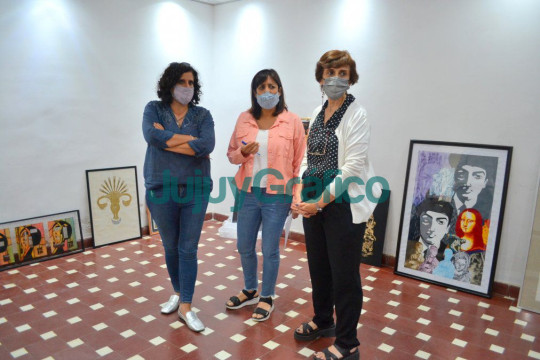
View On WordPress
#C.A.J.A#Catamarca#Centro Cultural Culturarte#fotografías#Jujuy#Laura Maubecín#Macedonio Graz#Marcelo Coca#María Ester David#Raquel Zeitune#Salón Provincial de Artes#Tucumán
0 notes
Photo


Meet Maria Pilar Lorenzo, social scientist and policy researcher
1) What do you do?
For the past few years, I have carried out research works that intersect with issues relating to governance and development. Some recent projects I participated in dwell on Philippine National Rightsizing Program (Local Government and Education sectors), local government innovations (Local Government Academy), and Rapid Field Appraisal on Philippine Decentralization, Democratization and Development (Philippine Society for Public Administration and United Nations Development Programme).
At the moment, I am focusing on my doctoral research project that seeks to flesh out the interplay of the Association of the Southeast Asian Nations and Philippine higher education by probing into the higher education policies and practices situated at regional, national, institutional and local levels.
2) Where do you work?
I joined as a PhD candidate at Ghent University’s Centre for Higher Education Governance Ghent last November 2020. I am also a Research Associate of the Philippine Society for Public Administration, a Fellow of the Society of Transnational Academic Researchers (STAR) Scholars Network, a Member of the Pacific Forum Young Leaders Program, a Member of the ASEAN Think Tanks Network (by invitation only), an Associate Member of the National Research Council of the Philippines, a Member of the Phi Kappa Phi Honor Society, and I was recently a Fellow of the Regional Academy on the United Nations and a Fellow of the Royal Society of the Arts.
3) Tell us about the photos!
[Left:] This is a screenshot from the virtual awarding ceremony of STAR Scholars Network’s 2020 A. Noam Chomsky Global Connections Award. I am truly honored to have received an award in honor of Professor Emeritus Chomsky, one of society’s highly respected thinkers.
STAR Scholars Network is a non-profit grassroots organization that pioneers open access to knowledge, catalyzes innovative teaching and virtual exchange, advances social justice for underrepresented communities, and supports the academic advancement of emerging scholars in the Global South.
[Right:] This photo was taken at Keukenhof in Netherlands. I jumped for joy when I saw the piano only to find out that it’s just for display. Anyway, I doubt if I could play again my memorized pieces because it’s been a long time that I have not practiced since I moved to Belgium for my graduate studies.
Although I am super far from being a virtuoso, one of the things that have accompanied me throughout life is music. Music, for me, carries with it various ambivalences. It can be luminous and dark, entertaining and tragic, peaceful and restless. I think it is the powerful effect of music penetrating through the recesses of weary and wounded souls that it can be that salutary emotional shock as Plato once contemplated the encounter with beauty.
4) Tell us about your academic career path so far.
I joined Ghent University's Centre for Higher Education Governance Ghent as a Ph.D. candidate in November 2020, and recently completed Master of Science in International Politics and Advanced Master of Science in Cultures and Development Studies as a VLIR-UOS scholar at the Katholieke Universiteit Leuven and Master of Public Administration at the University of the Philippines.
The various scholarships I received have also enabled me to satisfy further my intellectual curiosity by participating in a number of academic programs organized by the Indiana University, University of Illinois, University of Lausanne, University of Copenhagen, United Nations University Institute on Comparative Regional Integration Studies, University of Hohenheim, Institute of Advanced Studies Köszeg, Charles University, National Graduate Institute for Policy Studies, University of Graz, Kobe University, and Santa Croce.
It is also an honor that I always take pride in being considered as a Scholar of the Nation at the University of the Philippines Integrated School/University of the Philippines Diliman Campus from kindergarten until graduate school. The kind of education I received there is not the usual trajectory of teaching a student to be employed well one day. In my personal experience, it is to sharpen all senses so that a student can be attuned to the victories and struggles of every age.
5) Anything else you’d like to share
I can describe myself as an avid reader and an eager learner, and this kind of personality has led me to pursue knowledge from an array of sources – leaving no stone unturned given the time, energy and resources that are available. My love for learning also implies getting trained in the needed academic rigor that any researcher has to undergo and learning from other sources that may not necessarily be found within an academic setting. It is for this reason that I like conversing with all sorts of people. I believe that every person is so unique that there is much to learn from whomever I have the privilege to meet.
#social science#political science#policy research#governance#higher education#social equity#humanist#development studies#public administration
6 notes
·
View notes
Photo
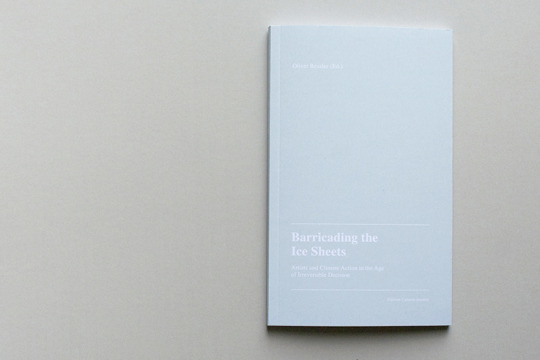
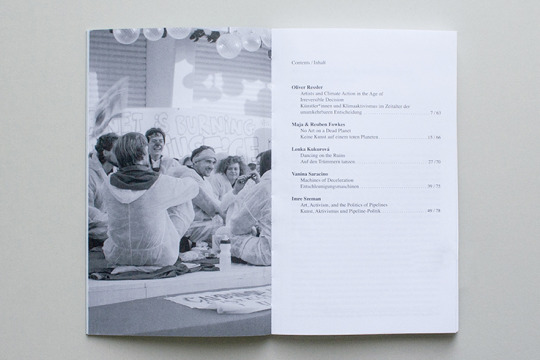



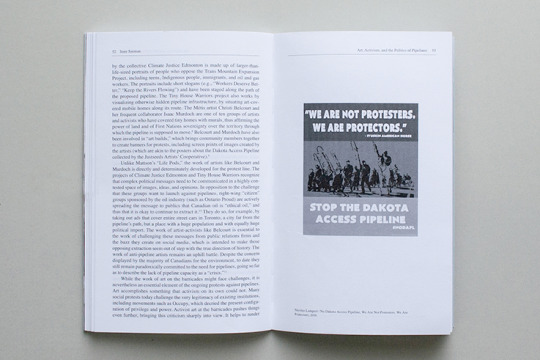
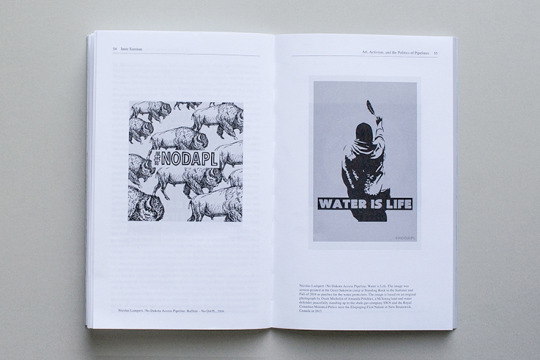
Oliver Ressler (Ed.): Barricading the Ice Sheets. Artists and Climate Action in the Age of Irreversible Decision
Ed. by Oliver Ressler.
Accompanying the conference “Barricading the Ice Sheets,” Camera Austria, 28. / 29.2.2020.
With contributions by Maja and Reuben Fowkes, Lenka Kukurová, Oliver Ressler, Vanina Saracino, Imre Szeman (eng./ger.).
Edition Camera Austria, Graz 2020.
88 pages, 13 × 21 cm, numerous b/w illustrations.
€ 14.90 / ISBN 978-3-902911-54-4
“Barricading the Ice Sheets” is a research endeavor by Oliver Ressler and supported by the Austrian Science Fund (FWF: AR 526).
From the publisher:
Artists’ involvement in social movements has developed significantly over the last few years. Not so long ago, artists mainly contributed to the movements’ visual identity, creating banners, posters, websites, and so on. Today, however, artists and cultural producers increasingly tend to become central protagonists, whether as spokespeople or in shaping media tactics and broader strategy. The four essays collected in this book confront the reality of the climate crisis without either illusion or resignation, discussing the possible contribution of artistic work with an acute awareness of the difficulties involved.
Excerpt from the foreword: Oliver Ressler, “Artists and Climate Action in the Age of Irreversible Decision”
Many people today see a change in personal behavior as a solution to the climate crisis. It is important to take a train instead of a plane, eat vegetables instead of meat, or put solar panels on a residential roof instead of burning gas. But private gestures of good faith alone are not equipped to stop epochal climate vandalism on a planetary scale. Planetary life is more than consumer behavior. Our power and responsibility as inhabitants of the Earth are collective and social, not private and personal. Powerful structures, not personal decisions, force us into lives that destroy livelihoods, devalue life, and ultimately endanger survival. We who suffer from those structures are collectively implicated in them, which is why they must be changed by our collective action or not at all. As Lenka Kukurová writes in her essay “Dancing on the Ruins”: “Individual and systemic change must be combined, and the latter should be the focus of energy” (p. 29).
Today, the climate movement is stronger than ever. Polite symbolic protest is a distant memory. In the last couple of years, the movement has materially obstructed “flagship” fossil-furnace projects all over the world. Arctic drilling, the Keystone XL tar sands pipeline, and shale frackers were stopped in their tracks by collective action. Some of Europe’s filthiest coalfired power plants were shut down by non-violent sabotage. Institutional investors began unloading fossil-fuel stocks in an act of tacit surrender to relentless climate movement pressure. More recently, Extinction Rebellion brought business as usual in London to a standstill for days at a time with blockades of bridges, successfully pressuring the British parliament to declare a “climate and environment emergency”—the first such proclamation by any European state. Such actions have immediate, concrete impact at the local site; and thanks to new means of communication, their “virtual” impact is felt across the planet. In his reflection on “Art, Activism, and the Politics of Pipelines,” Imre Szeman observes that the “existence of virtual worlds means that demonstrations today need to be designed to generate traffic on the web as much as to block traffic in the streets” (p. 49).
It should come as no surprise, then, that even the Bank of England— whose mandate does not include handing out stock-picking tips—has warned that hydrocarbons and traditional power plants will soon be doomed investments. But the “carbon bubble”¹ that troubles the central bankers and their peers is just one sign of the coming upheaval, and far from their only reason to fear it.
As writers here and elsewhere argue, art and culture can play a decisive role in confronting climate crisis by opening up new perspectives, inventing surprising ways to visualize and understand reality, by provoking debate, or, as Vanina Saracino formulates it here, by calling forth “machines of deceleration” that oppose “acceleration as the predominant temporality of growth and progress in technocapitalism” (p. 39). All of this is true for sure.
But another aspect has yet to receive the attention it merits. Namely, the role of artists and cultural producers in the climate movements as participants and direct agents of change. Artists’ involvement in these movements has developed significantly over the last few years. Not so long ago, artists mainly contributed to the movements’ visual identity, creating banners, posters, websites, and so on. Today, however, artists and cultural producers increasingly tend to become central protagonists, whether as spokespeople or in shaping media tactics and broader strategy. Nato Thompson has called this the “creative and productive unity of art and activism”;² Maja and Reuben Fowkes observe in this volume that “it is becoming harder to separate out the artistic component of social protest, as movements spontaneously develop tactics that appear to be inspired by artistic strategies and artists are fully immersed in collective struggles” (p. 19).
¹ Damian Carrington, “Bank of England warns of huge financial risk from fossil fuel investments,” The Guardian, March 3, 2015, https://www.theguardian.com/environment/ 2015/mar/03/bank-of-england-warns-of-financial-risk-from-fossil-fuel-investments.
² Nato Thompson, Seeing Power: Art and Activism in the Twenty-First Century (Brooklyn NY, and London: Melville House, 2015), p. 25.
#camera austria#climate change#climate crisis#books on art#photography#art#activism#2020#Oliver Ressler#Maja and Reuben Fowkes#Lenka Kukurová#Vanina Saracino#Imre Szeman#standing rock#water protectors#keystone xl#ecological collapse#theory
4 notes
·
View notes
Text
OPEN LETTER FROM ARTISTS, CREATIVE AND CULTURAL WORKERS
OPEN LETTER FROM ARTISTS, CREATIVE AND CULTURAL WORKERS
* Self-expression is a human right *
* Internet censorship does not create a fair income *
Dear Members of the Parliament,
We as artists, creative and cultural workers appeal to you as representatives of the European Parliament:
The proposed Copyright Directive is not in our interests. We will gain no significant revenue from it, but it will reduce our ability to create new cultural works and find audiences for it.
Take responsibility for an internet that works for cultural producers and is free from censorship, and do not agree to the EU Copyright Directive in this form. Article 11 and 13 are fundamentally against our interests.
Currently open letters are circulating that are claiming that the new directive would enable a „free“ internet by strengthening the copyright holders in relation to commercial providers and thus promote a „fairer“ form of „participation“ and „renumeration“. None of this will happen.
The directive will not lead to:
higher incomes for artists
guarantee of non-reproducibility of one’s own work
protection from theft of ideas
protection from piracy
reduce the monopoly position of the dominant group of social media companies
What it will lead to:
censorship on the internet
containment of creative exchange
transfer of the judicial sovereignty to private decision-makers
wrongful decisions due to algorithmic bias
impediment of fair procedures which then will be neither open nor individual
enablement of abuse of power through non-public decision-making processes
abusive interpretation for the own benefit of the commissioned platforms
exclusion of self-uploaded material that even meets the criteria of copyright law but categorizes as further prohibited content such as pornography, insult, depiction of violence, terrorism etc.
uncertainty and self-censorship instead of motivation to creativity and self-expression
We also want to point out that we are highly critical of how platforms cash in on unpaid labour by countless contributors – not just artists – and that we must find new models for how the revenue of these value-added processes can be redistributed more equally.
We therefore appeal to you: Say NO – vote against the Copyright Directive!
Signatories
Nora Al-Badri, artist, Berlin
https://www.nora-al-badri.de/
Fahim Amir, writer, curator, artist, senior lecturer, University of the Arts, Linz
Clemens Apprich, PhD, Centre for Digital Cultures, Leuphana University, Lüneburg
https://www.leuphana.de/en/university/staff-members/clemens-apprich.html
Mz* Baltazar’s Laboratory, art, technology & feminism
www.mzbaltazarslaboratory.org/
Gerald Bast, president, University of Applied Arts, Vienna
https://www.dieangewandte.at/en/
Aram Bartholl, artist, Berlin
www.arambartholl.com
Konrad Becker, hyper media researcher and interdisciplinary content developer, initiator of Public Netbase and World Information Institute, Vienna
https://world-information.net/en/
https://en.wikipedia.org/wiki/Konrad_Becker
Ulrike Bergermann, professor for media studies, University of Art, Braunschweig
http://www.hbk-bs.de/hochschule/personen/ulrike-bergermann/
Željko Blaće, co-founder of MaMa (Zagreb) and ccSPORT (Berlin), Europe
http://Blace.name/
Sebastian Bodirsky, filmmaker, Berlin
http://sb.paqc.net/
Candice Breitz, artist, professor at University of Art Braunschweig, Berlin
http://candicebreitz.net/
Andreas Broeckmann, art theorist, Leipzig/Berlin
http://www.mikro.in-berlin.de/
Alina Buchberger, Dramaturgie, Kampnagel, Hamburg
Nadja Buttendorf, visual artist, founding member of Cyborgs e.V., Berlin
http://www.nadjabuttendorf.com
Constant Dullaart, artist, WerkplaatsTypografie, Arnhem
https://constantdullaart.com
Constant vzw, artist-run art, media and technology organisation, Brussels
http://www.constantvzw.org
Karl-Heinz Dellwo, filmmaker and publisher, Hamburg
http://www.bellastoria.de
Carola Dertnig, visual artist, professor at Academy of Fine Arts, Vienna
https://de.wikipedia.org/wiki/Carola_Dertnig
Detlef Diederichsen, divisional director music and performing arts, Haus der Kulturen der Welt, Berlin
https://www.hkw.de/en/hkw/organigramm/musik_tanz_theater/musik_tanz_theater.php
Diedrich Diederichsen, cultural theorist, professor at Academy of Fine Arts, Vienna/ Berlin
https://en.wikipedia.org/wiki/Diedrich_Diederichsen
Paul Feigelfeld, researcher, curator, Vienna
„UNCANNY : Artificial Intelligence & You“, MAK – Museum of Applied Arts, Vienna
http://www.viennabiennale.org/en/exhibitions/detail/uncanny-values-artificial-intelligence-you/
Andreas Fogarasi, artist, writer, co-editor of dérive, magazine for urban research, Vienna
https://derive.at/autoren/andreas-fogarasi/
FORUM STADTPARK, interdisciplinary space for art and culture, Graz
http://www.forumstadtpark.at
Günter Friesinger, writer, curator, member of monochrom, Vienna
https://de.wikipedia.org/wiki/G%C3%BCnther_Friesinger
http://monochrom.at
Matthias Fritsch, visual artist, Technoviking Archiv, Berlin
http://subrealic.net
Kristoffer Gansing, artistic director, transmediale festival for art and digital culture, Berlin
https://transmediale.de/
Johannes Grenzfurthner, artist, filmmaker, curator, writer, member of monochrom, Vienna
https://about.me/grenzfurthner
http://monochrom.at
Marina Gržinić, PhD, artist, philosopher, professor at Academy of Fine Arts Vienna, researcher advisor at ZRC-SAZU Institute of philosophy, Ljubljana,
http://en.wikipedia.org/wiki/Marina_Gr%C5%BEini%C4%87
http://grzinic-smid.si/
Adnan Hadziselimovic, PhD, head of department of digital arts, University of Malta
https://www.um.edu.mt/profile/adnanhadziselimovic
Karin Harrasser, media theorist, curator, editor of ZfK – Magazine For Cultural Studies, professor for cultural theory, University of Art and Design, Linz
http://www.ufg.at/Kulturwissenschaft.1401.0.html
Joan Heemskerk, artist, member of the artist collective JODI
http://wwwwwwwww.jodi.org/
Reni Hofmüller, artist, musician, curator, founding member of mur.at, founding member and artistic director of esc media art laboratory, Graz
https://esc.mur.at/
Jogi Hofmüller, artist and IT-consultant, founding member of Radio Helsinki and mur.at association for the promotion of network art, Graz
https://mur.at/
Tom Holert, writer, researcher, curator, Harun Farocki Institut, Berlin
http://harun-farocki-institut.org
Susanne Holschbach, PhD, art and media scientist, curator, lecturer, Berlin
Endy Hupperich, painter and lecturer, Art Academy Bad Reichenhall, Mexico City/ Germany
http://www.endy-hupperich.com/
IG Kultur Vienna, representation of cultural workers & institutions, Vienna
https://igkulturwien.net/
Thomas J. Jelinek, conceptual artist, director, dramaturge, curator nomad.theatre, Vienna
http://nomad-theatre.eu/
Rebekka Kiesewetter, Lic. phil., art historian, economist, writer, curator, founding member of DA Institute of Applied Knowledge, Berlin
https://www.rebekkakiesewetter.com/
http://www.da-institut.org
Angela Koch, Pprofessor for aesthetics and pragmatics of audiovisual media, director of MA studies in media culture and art theory, University of Art and Design, Linz
http://blog.mkkt.ufg.ac.at/angelakoch/
Hubertus Kohle, professor of art history, Ludwig-Maximilians-University, Munich
https://de.wikipedia.org/wiki/Hubertus_Kohle
Olia Lialina, internet artist, theorist, curator, director at the New Media Pathway programme at Merz Akademie of Art, Design and Media, Stuttgart
http://art.teleportacia.org/
Johann Lurf, artist, Vienna
http://johannlurf.net/
Tomislav Medak, media theorist and amateur librarian, member of Multimedia Institute/MAMA (Zagreb) and Centre for Postdigital Cultures (Coventry University)
http://www.mi2.hr/
http://www.memoryoftheworld.org
http://www.coventry.ac.uk/research/areas-of-research/postdigital-cultures/
Suzana Milevska, visual culture theorist, curator, principal investigator Politecnico di Milano TRACES
http://www.traces.polimi.it/event/contentious-object-ashamed-subjects-exhibition/
monochrom, art-technology-philosophy-group, Vienna
https://en.wikipedia.org/wiki/Monochrom
Gabriel Ben Moshe (S Moses), digital-based artist, Weimar/ Tel Aviv
http://www.gabsmoses.com
Michael Murtaugh, Senior Lecturer, Experimental Publishing Master, Piet Zwart Institute, Rotterdam
http://xpub.nl/
Stefanos Pavlakis, artist/ director, Berlin
http://www.stefanos-pavlakis.com/
Oliver Pietsch, artist, Berlin
http://www.oliverpietsch.com
p.m.k, Cultural Life Support System, Innsbruck
http://www.pmk.or.at
Paul Poet, film director, journalist, media scientist, project manager, Vienna
https://www.imdb.com/name/nm1301724/
qujOchÖ, art collective, Linz
https://de.wikipedia.org/wiki/QujOch%C3%96
Ursula Maria Probst, curator, writer, artist, lecturer, Academy of Fine Arts, Vienna
https://www.fluc.at/kunstimfluc/
Magdalena Reiter, open design & open knowledge activist
https://www.magdalenareiter.at/
Roel Roscam Abbing, artist, researcher, member of https://vvvvvvaria.org/
https://roelof.info
Robert Sakrowski, curator, Panke gallery, Berlin
http://www.panke.gallery/
Marius Schebella, artist and developer, head of subnet, platform for media art and experimental technologies Salzburg
http://www.subnet.at
Ashley Hans Scheirl, Mag. MA, artist, professor at the Academy of Fine Arts Vienna, Berlin/Vienna
http://www.ashleyhansscheirl.com
Georg Schelbert, Head of Media Library/ Department of Art and Visual History, Humboldt University, Berlin
http://www.kunstgeschichte.hu-berlin.de/personen/wissenschaftliche-mitarbeiterinnen/georg-schelbert/
Elisabeth Schimana, artistic director of IMA Institute for Media Archology, St. Poelten
http://ima.or.at
Nora Sdun, publisher, Textem Verlag, Hamburg
http://www.textem.de/
Judith Siegmund, professor for contemporary aesthetics, State University of Music and the Performing Arts, Stuttgart
http://www.judithsiegmund.de
Sumugan Sivanesan, researcher/ writer/ anti-disciplinary artist, Berlin/ Sydney
http://sivanesan.net/
Domagoj Smoljo, artist, !Mediengruppe Bitnik
https://wwwwwwwwwwwwwwwwwwwwww.bitnik.org/
Cornelia Sollfrank, PhD, artist and researcher, Berlin
http://artwarez.org/
https://en.wikipedia.org/wiki/Cornelia_Sollfrank
Felix Stalder, writer and researcher, member of the technopolitics group Vienna, professor for digital cultures and network theories at the University of the Arts, Zurich
http://felix.openflows.com
Hito Steyerl, filmmaker, writer, Berlin
https://en.wikipedia.org/wiki/Hito_Steyerl
Axel Stockburger, PhD, artist, assoc. prof. for art and cultural theory, Academy of Fine Arts, Vienna
http://stockburger.at/
Nina Stuhldreher, visual artist, reality researcher, neurodiversity activist, Vienna/ Berlin
http://blog.mkkt.ufg.ac.at/wp-content/uploads/2018/12/netzaktivismus_LV-2.jpg
Kathrin Stumreich, visual artist, Vienna
http://www.kathrinstumreich.com/
Winnie Soon, MA, MSc, Ph.D, Assistant Professor
Department of Digital Design and Information Studies, Aarhus University
http://aestheticprogramming.siusoon.net/
Peggy Sylopp, artist and computer scientist, Berlin
http://peggy-sylopp.net
Tamiko Thiel, freelance media artist, Munich
http://www.tamikothiel.com
Magdalena Tyzlik-Carver, Assistant Professor in Digital Design and Information Studies, Aarhus University
Wolfgang Ullrich, art theorist, writer, Leipzig
https://de.wikipedia.org/wiki/Wolfgang_Ullrich_(Kunsthistoriker)
https://www.digitale-bildkulturen.de/
ideenfreiheit.de
Yvonne Volkart, researcher, lecturerer, Academy of Art and Design, Basel
https://www.fhnw.ch/de/personen/yvonne-volkart
Carmen Weisskopf, artist, !Mediengruppe Bitnik,Berlin
https://wwwwwwwwwwwwwwwwwwwwww.bitnik.org/
Thomas Willmann, author, Munich
Mick Wilson Artist/Educator, University of Gothenburg, Gothenburg Sweden
Marlies Wirth, Curator Digital Culture & Design Collection, MAK – Museum of Applied Arts, Vienna
http://mak.at/
Florian Wüst, film curator, publisher, curatorial team of transmediale, Berlin
https://transmediale.de/
Martin Zellerhoff, photographer, fair pay activist, Berlin
http://www.ich-krieg-weniger.de
http://fairpaynotfilters.eu/
14 notes
·
View notes